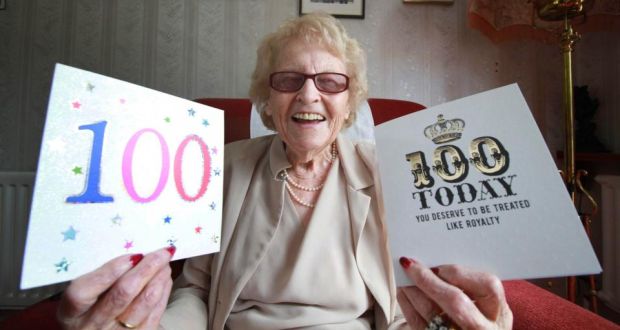A Century of Life… Imagine That!
by Máire Godfrey (Impress Printing, €15.00hb; contact mairegodfreyacenturyoflife@gmail.com).
The provenance of this book is unique. It was written by Mrs Máire Godfrey as part of the celebrations to mark her 100th birthday.
Owing to the extraordinary developments in medicine and the remarkable enhancement of physical and social conditions, the elderly and retirees are living into their nineties and are making up an increasing proportion of the population. While this is causing economists and social planners serious concern, it does not in any way faze the ‘golden oldies’, many of whom are enjoying life as never before, as is attested to in the introduction.
Máire was born in Belfast on May 30, 1915. Her father conducted a drapery business near the present Titanic Centre. She recalls how the pogroms against the Catholics in 1922 affected her family. Her father’s shop was attacked and looted, with members of the RIC standing idly by, and the family was forced out of their home which was also in the midst of Protestant East Belfast. When they fled south to Máire’s mother’s home in Rathmore in Co. Kerry, they again encountered a dangerous situation. The civil war between the Treatyites and Anti-Treatyites had begun and a party of the Irish Free State soldiers had occupied and fortified the house, where they took refuge.
Máire’s experiences across the last hundred years included two other difficult periods: the shortage of almost everything apart from basic food during World War II and the devastation caused to many people by the economic collapse in 2008. Máire’s life in her early years in Rathmore, a fairly typical village of rural Ireland, appears to have been almost idyllic, but even there she came face to face with deep sadness. Her home was situated next to the railway station, where not a week passed without an emigrant setting out for ‘America’. The weeping of those going and seeing them off was heart-breaking. The departure would be preceded by an ‘American Wake’, so-called because for many parents it would be the last time they would see their son or daughter.
Máire describes Sunday in Rathmore with everyone attending Mass in their ‘Sunday best’ clothes. There was also a tradition which traced its origin back to the penal law period. Known as the ‘Stations’, in the spring and autumn Mass was celebrated in the homes of farmers in townlands distant from the parish church to facilitate those residing in the vicinity. Match-making preceded most marriages and the ‘wake’ was an important part of funeral services. The wake was generally more of a social occasion than an opportunity for sharing grief and it had a number of rituals. There was the keening women but besides there was snuff, barmbrack, cake and tea for the women, porter and whiskey for the men and clay pipes filled with tobacco for the smokers.
Máire is to be congratulated on reaching her 100th birthday and for her interesting account of her many and varied experiences in a much-changing Ireland.



